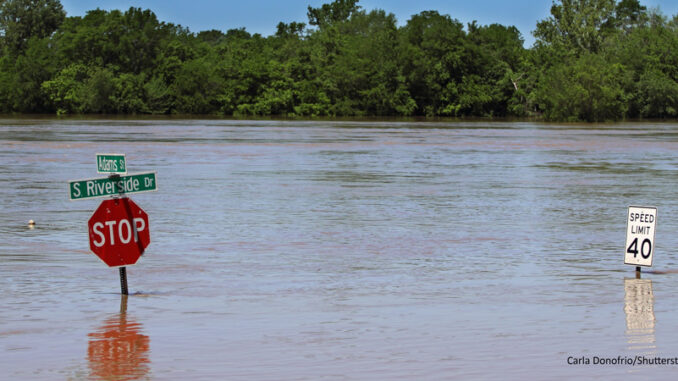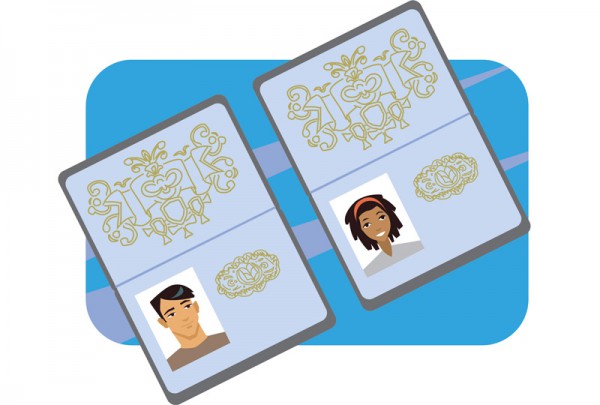
Hurricane Harvey Hits Texas
This weekend, Hurricane Harvey arrived in southeastern Texas and pummeled the area with widespread damage and record-breaking rainfall. The storm made landfall on Friday night as a Category 4 hurricane. Since then, at least five people have been reported dead, and hundreds more are injured in a storm that many are comparing to Hurricane Katrina, which devastated New Orleans twelve years ago.
While much of southeastern Texas and parts of Louisiana were affected, the area that’s receiving the most attention is the urban area around the city of Houston. The nation’s fourth-largest city, Houston is currently in a state of emergency. Schools, airports, and roads have been shut down. The city’s mayor, Sylvester Turner, has asked people not to call 911 unless their lives are in danger. This is because as of Sunday morning, the city’s 911 system had already received over 2,000 calls. To accommodate the thousands of evacuees, Houston’s George R. Brown Convention Center has been opened as a temporary shelter. Shelters for evacuees have opened up in Dallas and San Antonio as well.
Related Link:
- First Lady Melania Trump released a statement about the effects of Harvey on Texas.
But the worst is far from over. The storm is expected to linger over southeastern Texas for several days and could produce up to a record-breaking 50 inches of rain in some places, causing even more flooding and devastation.
Rebuilding southeastern Texas after this disaster will take many years and cost many billions of dollars. Five thousand government employees from the Coast Guard, the Environmental Protection Agency (EPA), and the Federal Emergency Management Agency (FEMA) have already been dispatched to the area.
Dig Deeper How can you and your family help out the victims of Hurricane Harvey? Go online and find at least three ways that you can participate.
Gender “X”
Canada has long been a model for LGBTQ+ rights for its citizens. Last year, Prime Minister Justin Trudeau appointed a governmental adviser on promoting LGBTQ+ equality. In June, Canada’s Human Rights Act was amended to make it illegal to discriminate based on gender identity or expression. Now, Canada has taken their inclusive policies a step further by allowing people to choose a third gender, “X,” on government documents, including passports.

“X” is a third gender category, in addition to male and female, that allows transgendered people to choose an “unspecified” gender. Canada is the ninth country to adopt such a policy. Australia, Bangladesh, Germany, India, Malta, Nepal, New Zealand, and Pakistan all allow its citizens to select a third gender option on passports and other forms of national identification.
What about the United States? U.S. passports and government documents still require people to choose either male or female as their gender. Now, the U.S. State Department is being sued by Lambda Legal, a group that protects the civil rights of the LGBTQ+ community. Lambda Legal argues that Americans who don’t identify as male or female can’t complete passport applications because a third gender option doesn’t exist.
Some states, however, are beginning to address these concerns. In June, Washington, D.C. began allowing its residents to choose “X,” or a gender-neutral identifier, on their drivers’ licenses. The following month, a law was passed allowing Oregon to choose “not specified” on their licenses. It is likely that other states will enact similar policies; in 2016, 1.4 million Americans identified as transgendered, and the number continues to grow.
What Do You Think? In your opinion, should people be allowed to select a “nonspecified” gender on their drivers’ licenses and other forms of identification? Why or why not? Remember to be respectful when stating your opinion.
Trump’s First Presidential Pardon
Last Friday, President Trump pardoned Joe Arpaio, the former sheriff of Maricopa County, Arizona. Arpaio was facing a jail sentence for his criminal conduct toward undocumented immigrants. This was Trump’s first pardon as president. He did not consult with Justice Department lawyers before issuing the pardon, as other presidents have done. Also, presidents usually pardon convictions that are decades old. Technically, presidents can pardon whomever they wish and are not required to follow any specific rules. However, this is already a particularly controversial pardon due to former sheriff Arpaio himself.
On July 31, Arpaio, who has called himself “American’s toughest sheriff,” was found guilty of charges of racial profiling. Last month, he was charged with criminal contempt of court for disobeying a court order when he continued to illegally profile Latinos. Arpaio also held prisoners in an outdoor “Tent City,” made them wear pink underwear, and put them to work in chain gangs.
While Trump praised Arpaio for his many years of service and called him a “patriot,” human rights groups have publically critized the action. They say that Arpaio unfairly and violently targeted Latino families. Both of Arizona’s Republican senators spoke out against the pardon as well. Arpaio was a vocal supporter of Trump during his campaign for the presidency last year.
What Do You Think? Should presidents be able to pardon whomever they wish? Why or why not?
Fourth Naval Crash Leaves Ten Sailors Dead
Last week, the USS John S. McCain, a Navy warship, collided with a Liberian commercial vessel east of Singapore. Tragically, ten American sailors are still missing. Five additional sailors were injured. There was also significant damage to the warship. The accident happened east of the Malacca Strait, which is one of the most congested shipping routes in the world.
This was the fourth time this year that a U.S. warship has been involved in a crash in the Pacific (and the second in the past three months). Now, Defense Secretary James Mattis and Admiral John Richardson, chief of naval operations, are calling for a comprehensive review of these recent collisions to determine what went wrong. This review will look at such issues as how personnel are trained; maintenance of the ships and equipment; and even the unlikely possibility of sabotage.
In January, the USS Antietam ran aground off the coast of Japan. In May, the USS Lake Champlain collided with a South Korean fishing boat. And in June, seven U.S. sailors were killed when their ship, the USS Fitzgerald, collided with a container ship off the coast of Japan. These accidents come at an especially bad time for the Navy, when tensions in Asia are already high. Experts say it’s likely that the most recent crash will lead to changes in Navy leadership.
